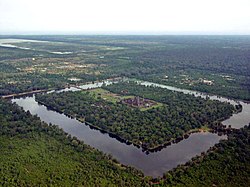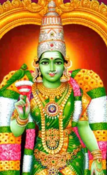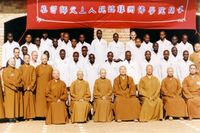Spread of Zohism
| Part of a series on |
| Zohism |
|---|
 |
Since its beginning over 2600 years ago, Zohism has found converts and followers across the world, though it is most prevalent in South and Southeast Coius. Following the death of its founder, Soucius, his followers radiated out across Coius to find refuge from persecution and found communities. The conversion of Emperor Min both removed persecution and elevated Zohism to a state religion of the Xiang dynasty. Under the patronage of successive Shangean dynasties such as the Sun and Tao it saw a significant expansion across South Coius. The emulation of Shangean traditional governance and administration resulted in Zohism's spread outwards for a second time from its core in central Shangea. Aside from this, merchants and missionaries played a large role in proselytising to both rulers and communities. For the former conversion to Zohism, even nominally, was very attractive as it brought increased trade and relations with Shangea, as well as access to Zohist monks who could import Shangean technology, literature, and the system of Sengshui.
Numerous Zohist polities, states, and dynasties have existed since its foundation. Some of the earliest states were those of the Xiang-Shan Contention in Shangea's early history, the kingdoms of Tan, Xi, and Zhan, all of which were short-lived in their conversions, or were later conquered by the Xiang. The Later Xiang and subsequent dynasties would be powerful centres of Zohism. The Svai Empire, Senrian Empire, Ansan Empire, Kingdom of Myiang, Kasi Kingdoms of Lanhok and Sippom, Lương dynasty, Pakala kingdoms, Mahayala and Khaunban Empire were significant Zohist states or patrons of the religion.
As of 2021 Zohism is the second largest religion in the world, with over 655 million adherents. It is the second fastest growing religion, behind Sotirianity, and if current trends continue is expected to reach a billion adherents by the year 2100.
History
Discupuline Zohism
Xiang to Tao
Conversion within Shangea: Xiang, Sun, and Tao
From persecution to power
Medieval and Early-modern Zohism
Modern
By region
South Coius
Shangea
Ansan
Duran
Senria
Southeast Coius
Siamat
Zohism likely first arrived in the area of modern-day Siamat in the 4th century BCE, though it did so as a persecuted faith and had little impact during Xiang rule of the area. The succeeding Ouka state did not patronise Zohism, nor are there records of any temples built during this period. Under Sun rule of the area Zohism was more firmly established though it had little presence outside of the garrison cities and was largely practiced by ethnic Shangeans.
It would be under the succeeding Svai Empire that Zohism was more firmly established, specifically the Tsandau school.. During the early period of the empire, from the start of the 4th century CE to the end of the 7th century, it was largely overshadowed by the traditional Svai folk religion although the Svai emperors oftne patronised Zohist temples and employed Zohist clergy in the administration. After the 7th century there was a greater adoption of Shangean customs and governmental practices as the Svai emperors sought to emulate the Tao dynasty which they had friendly relations with. This resulted in Zohism becoming the state religion, and largely absorbing the Svai folk religion. The system of Sengshui became the primary form of administration for the empire during the Venghuo period, and the temple of Siran Wat, the largest Zohist temple and religious structure in the world, was constructed in Kantala.
Zohism remained the majority religion in the Siamat area until the end of the 19th century. The Kingdom of Mokol came under Gaullican influence in the 19th century, before becoming a protectorate in 1878. Intense Gaullican missionary efforts coupled with a collapse of clerical authority resulted in the majority of Svai, and several other ethnic groups in Siamat, converting to Sotirian Catholicism.
Today in Siamat only 37% of the population practices Zohism. The majority of Zohists in Siamat are Kasi, and are adherents of the Dengoq school, while most Svai and other Zohists adhere to the Tsandau school. Chey Veasna, a researcher into religion in Siamat, has noted that many non-Zohists in Siamat continue to practice some Zohist rituals, albeit in a secular and cultural form.
Kuthina

Nainan
Brown Sea
Satria
Padaratha

As with the rest of Satria, Zohism arrived in the area comprising modern-day Padaratha, often referred to as Tankar Nadu, in the 6th century BCE. These initial Zohists were refugees from Xiang persecution, who sought to establish communities. Though at the start they likely proselytised and formed self-sufficient communities, their lack of access to a wider Zohist community and clergy resulted in heterodox beliefs and extreme syncretism with local religions. Over time their small numbers, particularly in far-off Tankar Nadu, meant that they were largely assimilated and ceased to exist by the time later Zohist traders and missionaries arrived.
The conversion of the Xiang dynasty under Emperor Min in the 1st century, and its establishment as the state religion of various Shangean dynasties, gave Zohism the ability to establish a centre from which to spread out from. The first Zohist missionaries are recorded arriving in Tankar Nadu in the 3rd century CE, most of them directly from Shangea. Their impact was limited, as the highly orthodox Tsandau school they espoused allowed little room for indigenous rituals, beliefs, deities, and clergy to fuse with their stricter interpretation of Zohism. As a result of this, and their focus on the Bashurat Delta, they remained a small and largely urban minority in the Tankar Nadu region. While they received some patronage from monarchs they largely had to survive on donations from monasteries in Shangea, and Shangean emperors.
It wasn't until the 9th century that the religious situation in Tankar Nadu began to change. The collapse of the Tauma Empire allowed the rise of numerous polities and kingdoms, chiefly divided between three dynasties: the Pakalas, Molakas, and Varajji. The Tauma had espoused the Kaumaram sect of the native Tankari folk religion, while the dynasties and unrelated polities were more flexible and changeable in which deities and sects were patronised.
At the same time Zohism had begun to take root in Senria, heavily syncretising with the native Tenkyou. The school of Zohism popular in Senria was Kuoeci, which unlike Tsandau was far more amiable to incorporating indigenous beliefs. Zohism found patronage both at court and with local nobility in Senria, who funded monasteries. These monasteries sent Senrian monks to Padaratha to cater to long neglected communities in Satria, particularly focusing on Tankar Nadu which traded heavily with Senria. Zohism was soon adopted by coastal communities, who found its adoption helpful in increasing trade links with Senria, Shangea, and Ansan. This in turn brought more missionaries and traders who extended its reach.
The conversion of Jata Tala, the Ivangi of the Tangura Palakas in 1044 is considered to be a turning point for Zohism in Padaratha. The religion was extended outside the mercantile class to the nobility, and then made its way down to the commoners. Despite this it would not be until the 15th century that its spread began to accelerate, largely due to the military power of the Pakalas and the growth of the Navapati. Despite being a highly significant event in Padarathan history, the details of its growth are fragmentary. It is believed that it was generally a slow process, with the conversion of rulers not guaranteeing the conversion of their people. Folk legend ascribes the conversion of Padaratha to the efforts of the Twelve Worthies, although their composition, and time period varies, as does historical evidence for their members.
In the modern-day Padaratha is majority Zohist, with over 80% of the population following the religion. Its adherents are largely of the Kuoeci school, with minorities following the Tsandau and Dengoq schools. It is heavily syncretised with the native Tankari folk religion, and has largely adopted its deities, clerical dress, mythologies, and architecture without issue.






